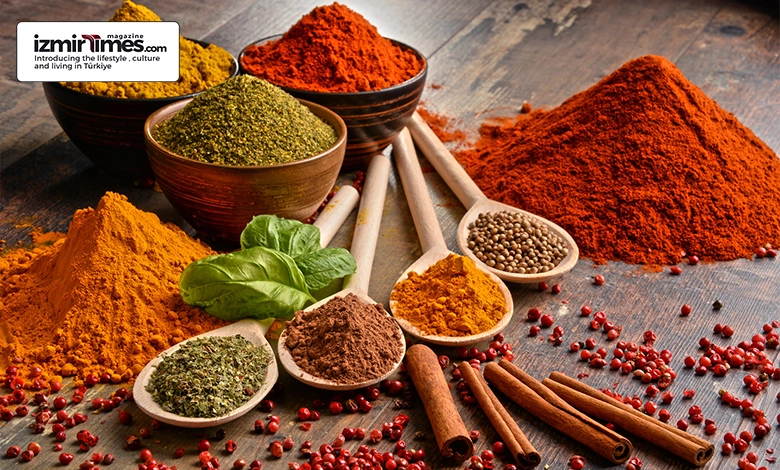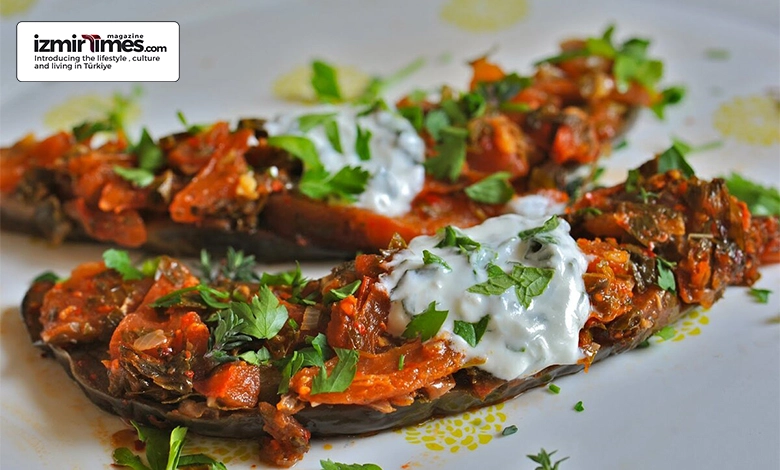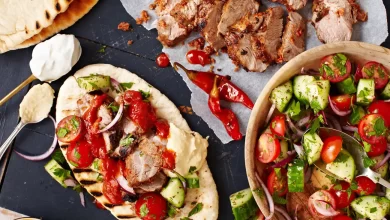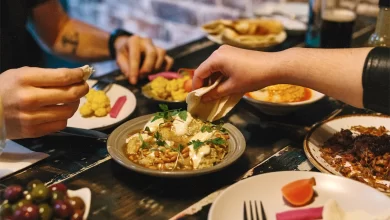Traditional Foods and Flavors in Turkey
Savoring Heritage: Exploring Traditional Turkish Cuisine

Introduction to Turkish Cuisine
Turkish cuisine is a rich and diverse culinary tradition influenced by various cultures throughout history. With its unique blend of flavors, spices, and cooking techniques, Turkish food offers a delightful gastronomic experience for locals and visitors alike.
One of the defining characteristics of Turkish cuisine is its emphasis on fresh and locally sourced ingredients. From succulent meats to vibrant vegetables and fragrant herbs, every dish is crafted carefully to highlight the ingredients’ natural flavors.
Let’s delve deeper into the fascinating world of Turkish cuisine and explore the traditional foods and flavors that make it unique.
Famous Turkish Dishes
Turkish cuisine boasts many famous dishes that have gained international recognition. These dishes are an accurate representation of the cultural heritage and culinary expertise of the Turkish people.
Kebabs are perhaps the most well-known Turkish dish, featuring succulent pieces of meat grilled to perfection. Each bite celebrates smoky goodness, whether the mouthwatering Adana kebab or the flavorful lamb shish kebab.
Baklava, a rich and sweet pastry made with layers of filo dough, nuts, and syrup, is another iconic Turkish dessert that has captured the hearts of dessert lovers worldwide. Combining crispy layers and sweet syrup creates a heavenly treat for the taste buds.
Doner kebab is a popular street food that consists of thinly sliced meat, usually lamb or chicken, roasted on a vertical spit. The tender and juicy beef, paired with fresh vegetables and a drizzle of tangy yogurt sauce, makes for a satisfying and flavorful meal.
These are just a few examples of the famous Turkish dishes that have become beloved staples of Turkish cuisine. Each dish tells a story of tradition, culture, and the love for good food.
Exploring Regional Flavors
Turkey is a country with diverse regional cuisines, each offering its unique flavors and specialties. From the rich and hearty dishes of Anatolia to the seafood delicacies of the Aegean and Mediterranean coasts, there is something to please every palate.
Manti is a popular dish in Central Anatolia, consisting of tiny dumplings filled with seasoned ground meat and served with a garlic-infused yogurt sauce. The combination of tender dumplings and creamy sauce creates a harmonious blend of flavors that will leave you craving more.
Meze is a selection of small, flavorful dishes typically served as appetizers. These include a variety of dishes such as stuffed vine leaves, spicy eggplant dip (baba ghanoush), and tangy yogurt with herbs. Meze is perfect for sharing and allows you to sample various flavors in one sitting.
Deniz Böreği, a specialty of the Black Sea region, is a savory pastry filled with cheese, spinach, or minced meat. The flaky layers of pie and the rich filling create a delectable combination that will transport your taste buds to the lush green landscapes of the Black Sea region.
These regional flavors are just a glimpse into the vast culinary tapestry of Turkey. Exploring the regional cuisines is like embarking on a flavorful journey, where every bite tells a story of the land it comes from.
Traditional Turkish Desserts
Turkish cuisine is renowned for its delectable desserts that are a true indulgence for anyone with a sweet tooth. These desserts are a testament to the creativity and skill of Turkish pastry chefs who have mastered the art of crafting sweet delights.
Kunefe is a beloved Turkish dessert made with a layer of shredded pastry dough, melted cheese, and sweet syrup. The contrast between the warm, gooey cheese and the crispy pastry creates a mouthwatering sensation that is hard to resist.
Lokum, known as Turkish Delight, is a soft and chewy confectionery treat in various flavors, such as rosewater, pistachio, and lemon. Each bite of this sweet delight is a burst of flavors that will transport you to the bustling markets of Istanbul.
Sütlaç, a creamy rice pudding flavored with vanilla and sprinkled with cinnamon, is a classic Turkish dessert that is enjoyed both warm and chilled. This dessert’s velvety texture and comforting flavors make it a staple in Turkish households.
These traditional Turkish desserts are just a glimpse into the rich and diverse world of Turkish sweets. Whether you prefer sticky, syrupy treats or creamy, velvety delights, the Turkish dessert repertoire has something to satisfy every craving.
A Culinary Journey Through Turkish Spices
Spices play a vital role in Turkish cuisine, adding depth, complexity, and a touch of aromatic magic to every dish. The use of spices is an art in itself, and Turkish cuisine has mastered this art over centuries, creating a symphony of flavors that tantalize the taste buds.
Cumin is one of the most commonly used spices in Turkish cooking. Its warm and earthy flavor adds depth to dishes such as köfte (meatballs) and stews, infusing them with a distinctive, comforting, and satisfying taste.
With its tangy and slightly fruity flavor, Sumac is often sprinkled on top of salads, kebabs, and grilled vegetables, adding a zesty kick to the dish. It’s also a key ingredient in the popular Turkish spice blend za’atar.
Red pepper flakes, known as pul biber in Turkish, are a staple in Turkish cuisine. They add subtle heat and smokiness to dishes, such as lahmacun (Turkish pizza) and pide (Turkish flatbread).
The use of spices in Turkish cuisine elevates the flavors to new heights, turning every bite into a sensory adventure. Exploring the diverse world of Turkish spices is like embarking on a culinary journey that will awaken your taste buds and leave you craving more.
Vegetarian and Vegan Options in Turkish Cuisine
For vegetarians and vegans, Turkish cuisine offers various flavorful options that showcase abundant fresh produce and plant-based ingredients. From hearty vegetable stews to refreshing salads, there is no shortage of delicious vegetarian and vegan dishes.
Imam Bayildi, meaning “the imam fainted,” is a classic Turkish dish with eggplant, tomatoes, onions, and garlic. The combination of these simple ingredients, cooked to perfection, creates a dish that is satisfying and full of flavor.
Coban Salatasi, or Shepherd’s Salad, is a refreshing salad with diced cucumbers, tomatoes, bell peppers, onions, and parsley. It is dressed with olive oil and lemon juice, creating a light, tangy salad that pairs well with any meal.
Mercimek Köftesi, or lentil köfte, is a popular vegan dish made with red lentils, bulgur wheat, onions, and a blend of spices. These bite-sized lentil patties are flavorful and often served with tangy yogurt sauce.
These are just a few examples of Turkish cuisine’s vegetarian and vegan options. Whether you follow a plant-based diet or enjoy incorporating more vegetables into your meals, Turkish cuisine has many options to satisfy your taste buds.
Turkish Tea and Coffee Culture
Turkey is known for its vibrant tea and coffee culture, where these beverages are not just drinks but an integral part of socializing and connecting with others. From the bustling tea gardens to the aromatic coffee houses, experiencing Turkish tea and coffee culture is a feast for the senses.
Cay, or Turkish tea, is a black tea brewed strong and served in small tulip-shaped glasses. It symbolizes hospitality and is often enjoyed throughout the day, accompanying conversations and moments of relaxation.
On the other hand, Turkish coffee is a rich and flavorful coffee brewed in a unique pot called a cezve. It is known for its strong and intense flavor, often enjoyed after a meal or during a traditional coffee reading session.
Whether you prefer the comforting warmth of Turkish tea or the bold flavors of Turkish coffee, immersing yourself in Turkey’s tea and coffee culture is an experience that will awaken your senses and offer a glimpse into the vibrant social fabric of the country.
Unique Food Experiences in Turkey
Regarding unique food experiences, Turkey has a lot to offer. From exploring bustling food markets to indulging in traditional cooking classes, there are countless ways to immerse yourself in the culinary wonders of the country.
Kapali Carsi, or the Grand Bazaar, is a must-visit destination for food enthusiasts. This sprawling market in Istanbul is a treasure trove of spices, sweets, and traditional Turkish delicacies. Exploring the maze-like alleys and sampling local treats is an adventure in itself.
Food tours are also a popular way to discover the local food scene. Led by knowledgeable guides, these tours take you to hidden gems and local eateries, where you can savor authentic flavors and learn about the stories behind each dish.
Cooking classes offer a hands-on experience where you can learn to recreate traditional Turkish dishes under the guidance of expert chefs. From rolling out the dough for borek to mastering the art of Turkish coffee making, these classes are a delightful way to deepen your understanding of Turkish cuisine.
Embarking on these unique food experiences in Turkey allows you to connect with the culture, history, and people through the universal language of food. It’s an opportunity to create lasting memories and develop a deeper appreciation for the flavors of the country.
Tips for Trying Turkish Food at Home
If you’re inspired to bring the flavors of Turkey into your kitchen, here are a few tips to help you recreate the magic of Turkish cuisine:
1. Source authentic ingredients: Look for specialty stores or online shops that offer authentic Turkish ingredients such as spices, olive oil, and cheeses. Using high-quality ingredients will elevate the flavors of your dishes.
2. Experiment with spices: Embrace the use of spices in Turkish cuisine and explore different spice blends to add depth and complexity to your dishes. Feel free to get creative and try new combinations.
3. Master the art of grilling: Grilling is a popular cooking technique in Turkish cuisine. Invest in a good quality grill or use a stovetop pan to achieve the signature smoky flavors of Turkish kebabs and grilled vegetables.
4. Explore traditional recipes: Dive into cookbooks or online resources to find traditional Turkish recipes that pique your interest. Follow the instructions carefully and allow yourself to be transported to the vibrant streets of Istanbul through the flavors of the dishes.
5. Share the experience: Turkish cuisine is meant to be enjoyed with loved ones. Invite friends or family for a Turkish-inspired feast and share the joy of discovering new flavors.
By following these tips, you can embark on a culinary adventure in your kitchen and experience the beauty of Turkish cuisine firsthand.
Conclusion: Embracing the Flavors of Turkey
In conclusion, exploring Turkey’s traditional foods and flavors is a journey that will awaken your senses, ignite your taste buds, and leave you with a deep appreciation for the country’s culinary heritage.
From the famous dishes that have gained international recognition to the regional flavors that showcase the diversity of the land, Turkish cuisine is a celebration of culture, history, and the joy of good food.
So, whether you’re savoring a warm cup of Turkish tea, indulging in a plate of aromatic kebab, or sampling the sweet delights of Turkish desserts, each bite is an invitation to embrace the flavors of Turkey and embark on a gastronomic adventure like no other.
Are you ready to embark on this flavorful journey?















